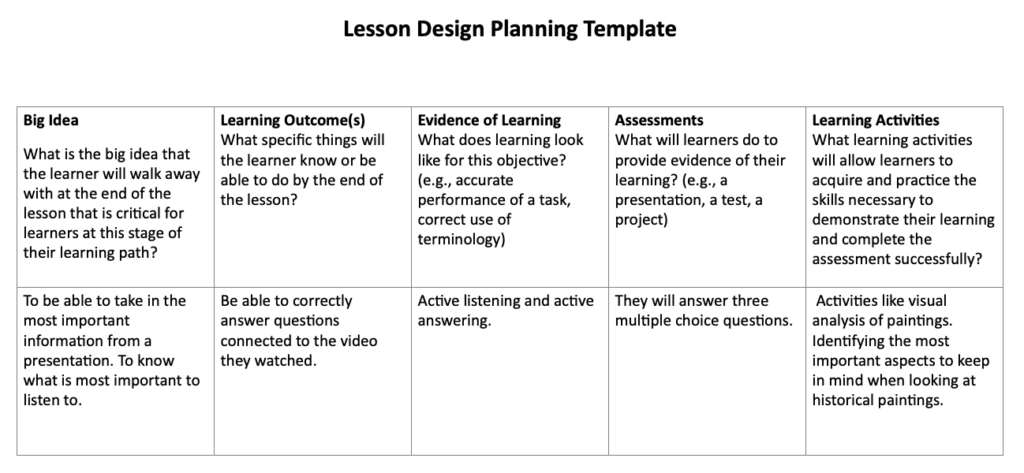
This module examined the different ways active learning is incorporated into effective lesson plans. We were also introduced to HP5, a new tool for creating interactive learning activities.
Several new foreign teaching vocab were thrown at me in this module including but not limited to, backward design, Merrill’s five principles of instruction, Bloom’s Taxonomy and scaffolding.
Although these terms were all new to me, like other terms I’ve learned in this course, they end up being quite simple ideas maybe even seemingly obvious ideas of teaching and learning that are organized into these unfamiliar structures.
Backward design, was the most straightforward to me. Keep the goal in mind before building the lesson plan so you know how to attain your goal. Makes sense. This is something I know I encounter all the time when looking at my courses’ syllabi. Those always include things like learning outcomes and objectives that the students should accomplish and then the lessons that will lead to those goals. I also see backwards design in courses like this one where many of our assignments act as sort of building blocks for our final assesment goal.
Merrill’s Five Principles of Instruction have to do with initiating hands-on problem-solving and learning. It is about making lessons meaningful to learners like relating assignments to real-world events, or issues.
Learning what Scaffolding is brought back many memories of elementary and high school, where I feel this method was used a lot in settings like science class or art. For example, the teacher would first demonstrate a lab before assigning us to do the same thing individually. This learning design I find myself particularly connected to and I know works well for me.
Simulation was brought up a lot in these as an example of how media can enrich a learning experience. This is quite an interesting idea for the future when things like vr get more advanced and we can see how it is used in a classroom setting.
My experience using H5P wasn’t half bad.
I can see myself using it again if need be. It’s a handy way to enrich a video.
Here is the lesson design template I filled out about the interactive video I made. It details the learning outcomes and activities required to be successful in viewing an interactive quiz video like the one I made:

I really wanted my video to be related to art history so what I did was I found an exhibition tour video from the MET explaining a pair of portraits. I took a snippet of this longer video and turned it into an interactive video.
I thought I could take this video and make it more of an active learning experience with H5P. Really it is an active listening quiz. So students have to really open their ears and be able to show their listening by answering the questions that interrupt the video.
The interactive video I created using H5P:
Sources:
My comment on Natasha’s Blog: